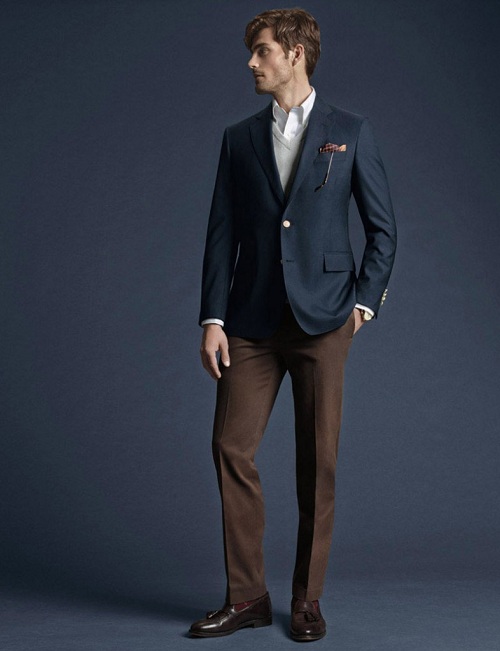MENSWEAR STYLE REVOLUTION
There’s a great deal of talk these days about vintage and retro and curated heritage brands. Tradition has become something of a commodity, it seems, rather than a history of beliefs and experiences. But for Brooks Brothers, authenticity is informed by nearly 200 years of history, even as the brand continues to evolve.
By: g. Bruce boyer
Bruce Boyer is one of
the menswear greats. Aside from being an author on the subject many times over,
the former fashion editor of GQ, Esquire and Town and
Country is an authority on style for gentlemen of all ages. Here he
explores Brooks Brothers’ role in the evolution of fashion as we know it today.
There’s a great deal of talk
these days about vintage and retro and curated heritage brands. Tradition has
become something of a commodity, it seems, rather than a history of beliefs and
experiences. But for Brooks Brothers, authenticity is informed by nearly 200
years of history, even as the brand continues to evolve. Founder Henry Sands
Brooks started a democratic revolution when he introduced high-quality, ready-made
clothing to the general public in the early 19th century, and
the brand has remained at the forefront ever since.
Countless staples of the modern
wardrobe have their roots in the Brooks tradition. The slim, stylish, and
youthful sack suit, with its soft, understated silhouette, was introduced by
the firm at the turn of the 20th century and quickly became the
look of choice for the Eastern Establishment. The following year, the
button-down collar dress shirt upended men’s dressing. With its soft collar and
cuffs, it was a major blow to the heavily starched shirts favored at the time.
Brooks’ philosophy that men could be both well-dressed and comfortable was
simply revolutionary.


In the second
half of the 20th century, casually conservative clothing with a
campus flair came into its own, as the G.I. Bill increased the number of
college students ten-fold in the years immediately after the war. Bermuda
shorts, polo shirts, white bucks and madras sports jackets were de
rigeur, and Brooks Brothers was the favored source for the new leisurely
look. Modern jazz musicians did their part to spread the word that Ivy-inspired
clothes were the “coolest.”
To cater to a
burgeoning American workforce, Brooks next launched the wash-and-wear shirt and
the non-iron cotton dress shirt, which simplified the requirements of office
dressing. Greater ease of wear also drove the popularity of the Brooks summer
suit, made of blended lightweight poplin.
By the
mid-20th century, Brooks Brothers was the most famous clothier in the world,
and the Brooks style of clothing came to be known as the Madison Avenue
approach, the Ivy League style or simply the “Brooks Brothers Look.” The
prototypical outfit was understated yet very distinctive: a soft grey flannel
suit; white, blue or pink oxford button-down, silk foulard tie and calfskin
brogues. Brooks also added to its line of lightweight summer wear by advocating
their “Brooksweave” quick-drying shirts and their famous wash-and-wear “poplin”
suits, a blend of cotton-synthetic fiber (offered in tasteful tan, navy and
olive green).
In four short years Brooks Brothers will reach its 200th anniversary. During that time the firm’s designs have revolutionized dressing many times over. By continuing to wed craftsmanship and technology while honoring its history, Brooks Brothers is sure to be at the fore of many more revolutions in the years to come.
Brooks Brothers Vietnam:
- HCM: L1 – 19 & 20, Saigon Centre, 65 Le Loi, District
1 – ☎ (028) 3939 0477
- Hanoi:
31 Hai Ba Trung, Hoan Kiem Ward – ☎ (024)
3266 8206